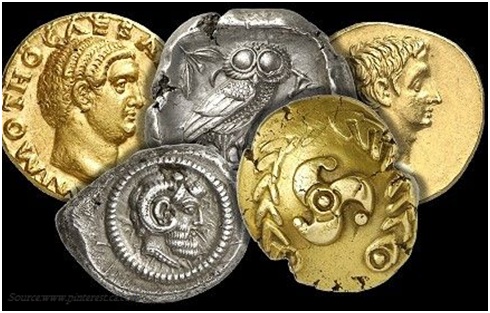The metals bronze and iron are frequently mentioned by archaeologists when discussing early human history. When individuals understood how to work with these metals, they helped to propel technology forward. Some specialists are now including copper to the list, as the Bronze Age was followed by a period during which the secret of introducing tin had not yet been found, which is now known as Copper Age.
However, Gold and silver are two additional metals which have played significant roles in human history. There is no age associated with either of these. That’s because they’ve played an equal role in practically every era. From their beginnings as jewelry and decoration, they rose to prominence as among of the first currencies, eventually becoming the foundation of the global financial system. They are still popular investments today because of their scarcity value and wide range of industrial applications.
When old stars burst in a supernova, silver and gold, like all other heavy elements, are generated. When the waste from these massive explosions is brought together by gravity, solar system like ours are formed, & large quantities of silver and gold are among the debris. They sat in the rocks for billions of year until people arrived and began mining. Our forefathers had aware of gold even before they started digging.
Most of the metal we use are derived from other minerals and aren’t naturally found in their pure forms. Gold is distinct. Because it is one of the lowest reactive element, it is commonly encountered in its pure form. Early man may have discovered bright, gleaming nuggets of it on riverbed & picked them up out of interest. They would have discovered that, as the easiest of all metals to work, it could be pounded into many shapes. Gold jewelry believed to be almost 8,000 years old has been uncovered.
Gold And Silver As Money

Early civilizations used the barter system, but this proved cumbersome when small settlements grew into enormous cities. Gold was both valuable and scarce, and it was gradually adopted as an early form of currency. It was later fashioned into standard-sized coins in ancient Greece.
Silver, like gold, can be discovered as pure metal. It’s also found mixed together with other metal, and as humanity learnt to remove them, they discovered silver in abundance. Because it was less expensive than gold but still uncommon and desirable, it started to be used as the currency. Around 700BC, the Lydians in what is now Turkey produced the first silver coins.
The Romans invented new methods of gold and silver mining, allowing them to produce much more than anybody before them, & they ruled a vast empire with an extensive commerce network. Barter had all but vanished, and a highly organized money system had arisen. Roman coins were widely distributed and accepted practically everywhere. When the Roman Empire collapsed apart, countries began minting their own currencies to replace the Romans’, although silver and gold remained the most popular metals.
The gold standard was foundation of the international monetary system until the British Empire abolished it in order to the print money during World War I. The system never fully recovered after 1918, however the United States managed to keep an altered gold standard in place until 1971. The gold standard was abandoned for a variety of economic reasons, including the fact that it limited governments’ power to control the money supply and modify exchange rates. Gold and silver, on the other hand, did not lose their worth; in fact, they became much more valuable See IRA.
Jewelry has been made out of gold and silver for 1000s of years; the earliest item of gold jewelry ever discovered is nearly 8,000 years old. They have maintained their appeal. Precious metals have long been sought for, from Egyptian pharaohs’ death masks to mediaeval crowns & modern wedding rings, and this means they’re still expensive. Gold and silver are both great conductors of electricity & have several applications in electrical equipment, driving up prices even further. These metals have a limited availability but an ever-increasing demand. As a result, they have even more scarcity worth than before, making them an outstanding investment.


